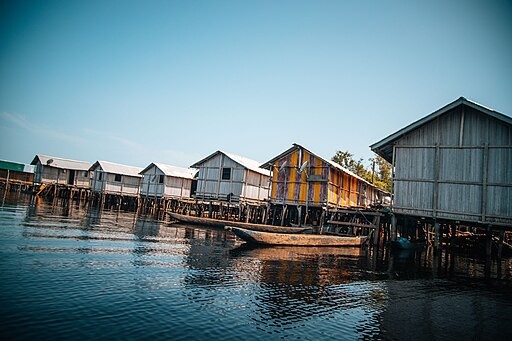In the mountainous border of Albania and North Macedonia lies Lake Ohrid, the oldest lake in Europe. Also known as the "Pearl of the Balkans," the lake was formed from a tectonic activity between 4 and 10 million years ago, making it one of the oldest lakes in the world. Beneath its turquoise waters, scientists have discovered an ancient sedentary community that is considered the oldest lakeside settlement ever found in Europe.

Mysterious Village on Stilts
Underwater excavators exploring the depths of Lake Ohrid came across a settlement of stilt houses. Radiocarbon dating reveals that the site was constructed between 6000 and 5800 B.C., making it around 8,000 years old. It is also estimated to be inhabited by 200 to 500 people at any given time.
A team of Swiss and Albanian archaeologists has spent the past four years excavating the Albanian side of Lake Ohrid. According to team leader Professor Albert Hafner, the village is several hundred years older than the previously known lake-dwelling settlements in the Mediterranean and Alpine regions. This suggests that the town is the oldest of its type in the entire Europe.
The researchers discovered wild and domesticated animals' seeds, plants, and bones, indicating that the settlers thrived on agriculture, fishing, and raising domestic livestock. Fossilized wood fragments, such as prized pieces of oak, were also identified at the submerged site. When the tree rings were counted, the archaeologists derived new valuable insights regarding the climatic and environmental conditions of the area during that period.
The stilt houses were also found to be guarded by 100,000 defensive wooden spikes, which were driven into the bottom of the lake. According to Hafner, this discovery alone is a real research treasure trove.
Until radiocarbon dating results are confirmed, the title for the oldest known stilted villages in Europe and the world is held by the house settlement on the Lake of Zurich in Switzerland. This prehistoric village, built during the Late Bronze Age around 1100 to 800 B.C., consists of houses built on stilts over the water.
Meanwhile, the oldest known stilted houses were found in the Oakbank Crannog in Loch Tay in Scotland and dated back to the Bronze Age around 4000 years ago. Another old, silted settlement known to archaeologists was the Sankt Peter am Wallersee site in Austria. It dates back to the Neolithic period, around 3943 to 3668 B.C.
Preference Over Silted Settlements
Stilt houses, also known as pile dwellings or lake dwellings, refer to houses raised on stilts over a body of water. This kind of settlement can is found in various regions of the world, including the Arctic, Indo-Pacific, Americas, Africa, and Europe. Their discovery provides insights into early societies' architecture, way of life, and resource utilization.
Stilted settlements were believed to be designed to avoid flood in areas prone to deluge. Bodies of water also provide a readily available source of seafood for survival. Aside from this, living on water enabled the settlers to move people and goods easier.
Another theory as to why ancient cultures preferred to build stilted settlements has something to do with enhancing perceived status and prestige. As houses built over water held deep cultural and social significance, it signified the higher status of the community leaders.
RELATED ARTICLE : 7,000-Year-Old Road Linked to Hvar Culture Settlement Unearthed at 16-Foot Depth in Mediterranean's Adriatic Sea
Check out more news and information on Archeology in Science Times.











